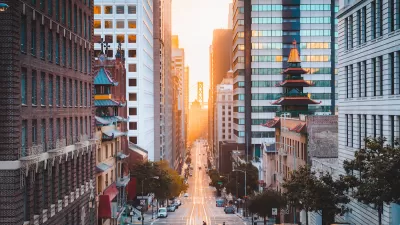"The comeback of the urban core is a striking reversal of long-term trends," proclaims Richard Florida. Although this rebound is good for urban growth and prosperity, it hasn't been able to solve enduring problems of poverty and disadvantage.
"The urban rebound is real," says Florida. "America’s urban cores and downtowns have become centers of innovation, growth, and consumption. The comeback of the core is a good thing—a very good thing—in that it provides the resources and capital that are required to create jobs, generate a viable tax base, improve living standards, and create deeper, more longer-lasting urban growth and prosperity."
"But America’s ongoing urban comeback is far from complete," he adds. "Isolated islands of prosperity remain surrounded by seas of distress and disadvantage."
Through a series of maps indicating the concentrations of America's three main socioeconomic classes in several cities, Florida traces "the striking class divides" that have accompanied this reversal. "Even as the urban core has rebounded and regenerated, large swaths of poverty, concentrated disadvantage, and urban distress continue to exist in a hidden, almost parallel dimension that is ignored by or invisible to many politicians, developers, and new urbanites."
"The next and perhaps greater urban challenge is to extend the benefits of rejuvenating cores to a far broader swath of people and neighborhoods," Florida argues. "We need to put equal if not greater effort into ensuring that the people and communities that are falling behind—still a clear majority in most cities—can participate in and benefit from this ongoing urban transformation."
FULL STORY: Comeback City, Divided City

Alabama: Trump Terminates Settlements for Black Communities Harmed By Raw Sewage
Trump deemed the landmark civil rights agreement “illegal DEI and environmental justice policy.”

Planetizen Federal Action Tracker
A weekly monitor of how Trump’s orders and actions are impacting planners and planning in America.

The 120 Year Old Tiny Home Villages That Sheltered San Francisco’s Earthquake Refugees
More than a century ago, San Francisco mobilized to house thousands of residents displaced by the 1906 earthquake. Could their strategy offer a model for the present?

Ken Jennings Launches Transit Web Series
The Jeopardy champ wants you to ride public transit.

BLM To Rescind Public Lands Rule
The change will downgrade conservation, once again putting federal land at risk for mining and other extractive uses.

Indy Neighborhood Group Builds Temporary Multi-Use Path
Community members, aided in part by funding from the city, repurposed a vehicle lane to create a protected bike and pedestrian path for the summer season.
Urban Design for Planners 1: Software Tools
This six-course series explores essential urban design concepts using open source software and equips planners with the tools they need to participate fully in the urban design process.
Planning for Universal Design
Learn the tools for implementing Universal Design in planning regulations.
Clanton & Associates, Inc.
Jessamine County Fiscal Court
Institute for Housing and Urban Development Studies (IHS)
City of Grandview
Harvard GSD Executive Education
Toledo-Lucas County Plan Commissions
Salt Lake City
NYU Wagner Graduate School of Public Service





























